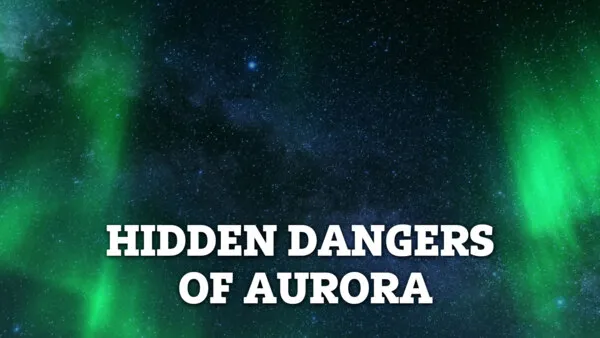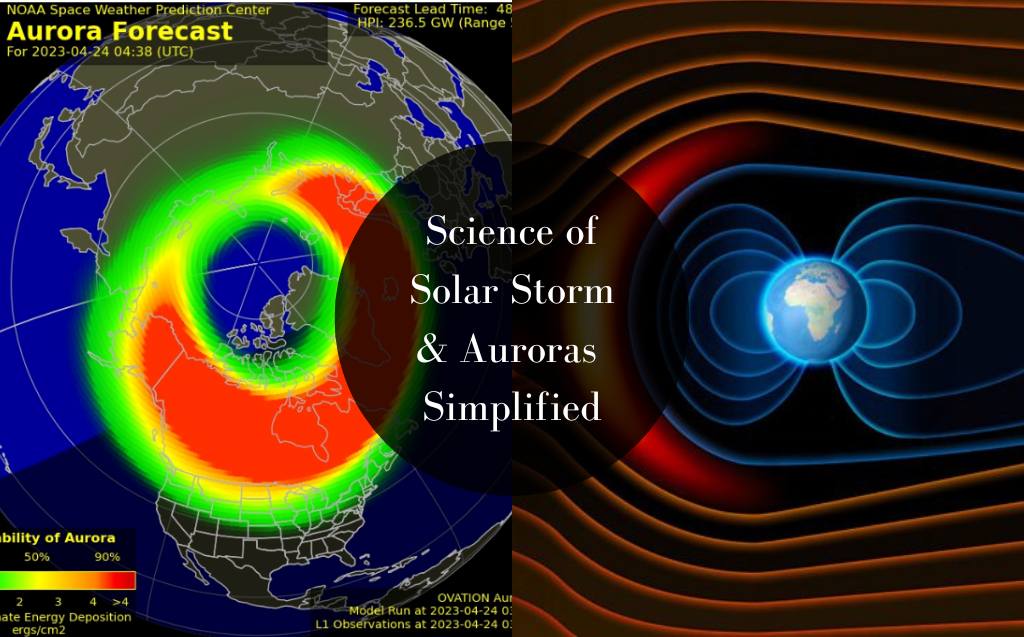Are The Northern Lights Dangerous? Experts Reveal The Dark Side Of Auroras and…
The mesmerizing beauty of the Northern Lights, or aurora borealis, is something that captivates millions each year. With their dancing green, purple, and pink colors lighting up the Arctic skies, it’s no wonder these displays are often associated with magic, wonder, and pure natural beauty. But what if we told you that these stunning displays of light could also pose hidden dangers?
While the auroras themselves are generally safe to observe, the underlying forces that create them — and their potential effects on our planet and technology — carry certain risks that many people don’t realize. Let’s take a deeper look at the dark side of the auroras, exploring how the same phenomenon that creates this celestial spectacle can sometimes have a harmful impact on our world.
What Are the Northern Lights?
Before diving into the dangers, it’s important to understand how auroras form. The Northern Lights are a natural light display caused by charged particles from the Sun interacting with Earth’s magnetic field. These particles, primarily electrons and protons, collide with atoms and molecules in Earth’s atmosphere, exciting them to higher energy states. As they return to their normal state, they release this energy as light, creating the colorful bands we see dancing across the sky.
These solar wind particles come from the Sun’s corona, and when they reach Earth, they are funneled by our planet’s magnetic field toward the poles. This is why auroras are most commonly seen in the high latitudes near the Arctic and Antarctic regions.
1. Impact on Satellites and Space Technology
One of the most significant dangers associated with solar activity and auroras is their effect on space technology. The same particles that create the auroras can also damage satellites and spacecraft. These charged particles, especially during periods of solar flares or coronal mass ejections (CMEs), can cause electrical circuits to short-circuit, or even fry the sensitive electronics of satellites.
Experts warn that solar storms, which are responsible for the auroras, have the potential to disrupt global communication systems, GPS navigation, and weather forecasting. In 2003, for example, a massive solar storm caused widespread disruptions to satellite communications, with several satellites being damaged or temporarily knocked offline.
Key Risks:
- Satellite malfunctions due to radiation and particle bombardment.
- Disruptions to global navigation systems, affecting GPS.
- Communication blackouts caused by high-frequency radiation.
2. Effects on Power Grids
Solar storms, particularly strong ones, can also cause geomagnetic storms on Earth. These storms can induce electrical currents in power lines, potentially damaging transformers and other infrastructure in power grids. This phenomenon, known as a geomagnetically induced current (GIC), could lead to widespread power outages.
A famous example of this occurred in 1989, when a massive solar storm knocked out power across large parts of Quebec, Canada. For nine hours, millions of people were left without electricity. Modern electrical grids, though more resilient, are still vulnerable to these powerful solar events, especially as they become increasingly reliant on satellite-driven technologies for communication and management.
Key Risks:
- Power outages affecting large urban areas.
- Damage to electrical infrastructure such as transformers and power stations.
- Increased risk of cascading failures in interconnected power grids.
3. Disruption to Air Travel
While the Northern Lights themselves are a spectacular sight for travelers heading north, auroras are also linked to potentially hazardous conditions for high-altitude flights. The increased levels of radiation during solar storms can interfere with aircraft navigation systems, communication channels, and even pose health risks to airline passengers and crew flying at high altitudes, particularly near the polar regions.
On rare occasions, airlines have been forced to reroute flights around auroral zones to avoid radiation exposure, especially during intense solar activity. Pilots may also face difficulty navigating due to interference with magnetic compasses, and there are concerns about the cumulative radiation dose for passengers on long-haul flights during a solar storm.
Key Risks:
- Radiation exposure for passengers and crew on high-altitude flights.
- Navigation interference, potentially leading to rerouting.
- Communication disruptions affecting in-flight systems.
4. Health Hazards from Increased Radiation
Although auroras themselves aren’t harmful to the human eye or body, the phenomenon is a visual representation of larger processes taking place in space that can affect human health. During a particularly strong solar storm, the Earth’s atmosphere can be overwhelmed by the sheer volume of charged particles. This can increase radiation levels, particularly at higher latitudes, and potentially affect astronauts in space or individuals flying at high altitudes.
Astronauts aboard the International Space Station (ISS) are particularly vulnerable to solar radiation during solar events, and space agencies such as NASA have stringent protocols in place to protect them. While radiation levels on the ground are not typically harmful, those flying at altitudes above 30,000 feet or in polar regions may experience higher levels of exposure.
Key Risks:
- Increased radiation exposure for astronauts and high-altitude passengers.
- Potential long-term health effects from accumulated radiation exposure.
- Interference with biological rhythms in extreme cases, especially for people sensitive to changes in electromagnetic fields.
5. Disruption to Communications and Electronics
The geomagnetic storms associated with solar activity can also interfere with radio communications, particularly at high frequencies. Amateur radio operators and military communications systems have long known the impact of solar flares on their ability to transmit signals. During a solar storm, the increased ionization of Earth’s ionosphere can lead to widespread communication blackouts, making it difficult to establish contact across long distances.
In addition, electronic systems that rely on precise timing, like financial markets or data centers, can be disrupted by the electromagnetic effects of a solar storm. Systems dependent on synchronized timing may experience glitches or even crashes, which could lead to financial losses or delays in critical services.
Key Risks:
- Radio and communication blackouts affecting global communications.
- Failure of critical infrastructure, like banking systems or military operations.
- Short-term disruptions in GPS and timing-dependent systems.
How to Protect Yourself
While the risks associated with auroras and solar storms are largely outside of individual control, there are some general steps that can help mitigate exposure to the potential dangers:
- For airline passengers: Stay informed of solar storm forecasts. Airlines reroute flights during extreme solar events to avoid high-risk areas.
- For individuals in high-latitude regions: Solar storms can cause an increase in radiation exposure. While ground-based exposure is minimal, people flying at high altitudes should be cautious.
- For the general public: The likelihood of experiencing a harmful event due to auroras is extremely low. However, staying informed about solar activity from reliable sources like NOAA or NASA can help prepare for any potential disruptions.
Conclusion
The Northern Lights may be a breathtaking natural phenomenon, but like many wonders of the natural world, they are a byproduct of much larger forces that can have significant consequences. From satellite disruptions to power grid failures and communication blackouts, solar storms can trigger a chain of events that affect life on Earth in ways we don’t always consider.
While these risks may sound daunting, it’s important to remember that auroras themselves are not directly dangerous to humans. Most of the hazards are linked to the solar activity that causes them, which is something scientists continue to monitor and study closely. With increasing awareness of these risks and improving technologies to protect against them, we can continue to enjoy the beauty of the Northern Lights while minimizing their dark side.



